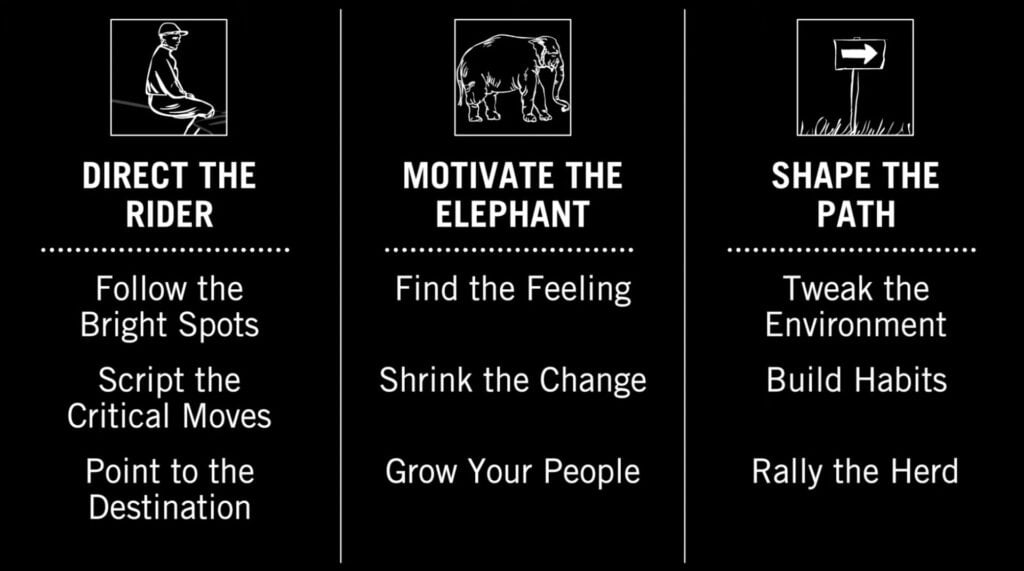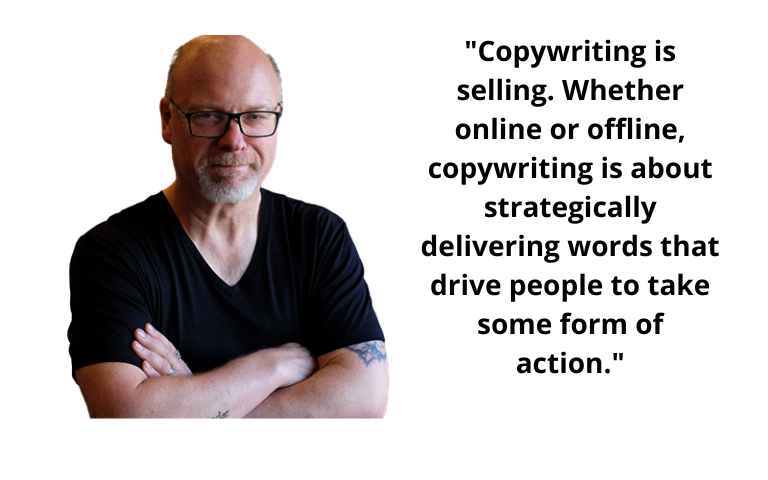A Comprehensive Framework for Change
Disclaimer: This post may contain affiliate links. For more information, please visit our Disclaimer Page.
The acclaimed book Switch, by Chip and Dan Heath, provides readers with a practical yet profound framework for enacting change at an individual and organizational level. By appealing to the emotional and rational sides of the human brain, the authors argue that leaders can overcome resistance, rally support, and ultimately drive transformation.
Overview of the Book Switch
Published in 2010, “Switch” draws on psychology, sociology, and business insights to demystify the complex change process. Despite people’s best intentions, the Heath brothers explain why change can be difficult. They propose that successful change requires directing the rational side of the brain, motivating the emotional side, and shaping the surrounding environment.
The Critical Importance of Change Management
Implementing change is an essential capability for individuals and organizations to master. However, research shows that most major transformation efforts fail. According to a study by McKinsey, only 30% of these initiatives succeed.
Therefore, books like Switch provide an invaluable roadmap for leading change more effectively at scale. The outlined strategies allow leaders to move past resistance, achieve buy-in, rally support, and drive real results. As change accelerates across industries, these concepts are more vital than ever for change agents and early adopters to embrace.
The Three Forces Framework

The core premise outlined in Switch is that making change happen requires working with three key forces in harmony:
The Rider and the Elephant
- The Rider represents the rational, analytical part of the brain.
- The Elephant represents the emotional, instinctive side.
While the Rider can recognize the path forward intellectually, he is limited in his ability to steer the much larger Elephant down that path. Without alignment, sustained change becomes impossible.
Directing the Rational Rider
To direct the Rider, leaders must communicate goals, offer detailed directions, and paint a compelling future vision. Ambiguity causes the Rider to lose in analysis and spin his wheels indefinitely. Maintaining razor-sharp focus is critical to avoid analysis paralysis.
Motivating the Emotional Elephant
Since emotions rule the Elephant, change must connect on a core emotional level to succeed. People need motivation through urgent needs, excitement, or a sense of greater meaning to fully invest themselves in change. Appealing directly to identity and core values is often the key that unlocks this level of commitment.
Shaping the Surrounding Path
Finally, the environment must support the desired change. Adjust policies, incentives, office layouts, checklists, and anything else that might help or hinder progress. Shape the path to stack the odds in your favor, overcoming resistance from laggards. Small tweaks can have an outsized impact in creating a turning point.
Addressing the Central Tension
The core tension in leading change comes from the fundamental disconnect between the rational Rider and the emotional Elephant. The Rider may recognize the need for change on an intellectual level, but the Elephant resists diverging from comfortable habits and routines.
This phenomenon explains the prevalence of analysis paralysis, where the Rider spins his wheels indefinitely, contemplating potential solutions without taking real action. In tough times, the Rider spots problems everywhere while the stubborn Elephant refuses to budge.
To overcome this impasse, the Rider must be aligned with the Elephant. With both sides working in tandem, change initiatives gain momentum.
Keys to Successful Change Management
Several research-backed strategies enable effective and sustainable change:
Three Surprising Truths About Change
Early in Switch, the Heath brothers share three unexpected insights about leading change successfully:
- What looks like laziness is often exhaustion. Change is hard work. People’s willpower and self-control are finite resources. Avoid depleting them through overload.
- What looks like resistance is often a lack of clarity. Remove uncertainty and ambiguity. Provide crystal clear direction to get the Rider on board.
- What looks like a people problem is often a situation problem. Behavior depends largely on the environment and peer pressure. Shape conditions to support change.
These counterintuitive principles serve as guiding lights throughout the book. They underscore why many change efforts fail and what leaders often misunderstand. Keeping these surprises in mind opens new pathways forward.
The Three-Part Framework Explained
The core framework outlined in Switch revolves around three key steps:
- Direct the Rider: To provide much-needed direction, define a vivid, inspiring destination postcard. Identify areas already demonstrating success and help the Rider clone what works. Clearly script out the critical behaviors required to remove ambiguity.
- Motivate the Elephant: Leverage powerful emotional levers like meaningful stories and heartfelt purpose to build lasting motivation. Shrink the change into more attainable milestones to build confidence. Grow people’s identity and values around the change through motivational techniques.
- Shape the Path: To pave the way forward, tweak environmental factors that can assist or impede progress. Build new behaviors by attaching them to existing habits and routines. Rally peer pressure and social norms to your advantage to overcome resistance.
Within each step, the Heath brothers provide specific techniques backed by academic research and organizational psychology. They share compelling examples from organizations that demonstrate the framework in action.
Rallying the Herd for Support
A vital concept covered in Switch is “rallying the herd,” or leveraging peer pressure to drive change. The Elephant looks to the herd for cues on how to behave.
To successfully rally support, identify key influencers and early adopters. Give them free space to coordinate behind the scenes. Publicize successes broadly. Use subtle language and messaging cues to reshape social norms and culture.
Rallying a critical mass to embrace change is essential for propagating new ways of thinking and working across an organization. Leading the herd takes skill and foresight.

Laziness vs. Exhaustion in Change
As one of the central surprises around change, the Heath brothers make a distinction between laziness and exhaustion that arises in resistance:
- Laziness implies an unwillingness to work hard or expend real effort. However, apparent demotivation frequently points to a separate root issue.
- Exhaustion occurs when change feels complex and overwhelming, requiring constant vigilance. This quickly drains people’s reserves of willpower and self-control.
Recognizing that exhaustion rather than laziness is often at play opens new pathways. Solutions center on making change more manageable: shrinking steps, tweaking environments, automating behaviors, and conserving willpower wherever possible. Treating resistance as exhaustion leads to greater empathy, support, and involvement.
Real-World Examples and Case Studies
Throughout Switch, the Heaths provide compelling examples of their framework in action:
- An executive rallying support for a new project by dumping 424 kinds of work gloves on a table, vividly demonstrating excessive purchasing waste.
- A Silicon Valley company keeping engineers focused on objectives by transforming vague goals like “enhanced security” into defined checklists of necessary steps.
- A student group that shrank a campus clean-up initiative by giving people very specific assignments like “pick up trash around the quad.”
These stories help illustrate how real organizations have leveraged the Rider, Elephant, and Path to drive change and optimize performance in the field. They make the core concepts feel tangible and accessible.
Conclusion and Key Takeaways
Chip and Dan Heath provide a thoroughly researched yet highly actionable roadmap for enacting impactful change in Switch. Their recommendations revolve around the following:
- Giving the Rider tight focus and direction through increased clarity to avoid analysis paralysis.
- Motivating the Emotional Elephant via powerful levers like identity and purpose.
- Shaping the surrounding Path by making desired actions easy and habitual.
With practical tools for directing, motivating, and shaping, leaders can navigate the complex change process in any context. Switch stands out for its memorable yet evidence-based approach, which sticks with readers long after putting the book down.
The Heath brothers break down the change process compellingly, providing a new lens for navigating obstacles and sparking meaningful improvement at scale. With prescriptive advice grounded in academic research and organizational psychology, Switch is invaluable for any leader or manager driving strategic transformation. The book’s lessons stick, offering guidance when undertaking the next change initiative or reviewing success factors and failure analysis.
Additional Resources on Change Management
For those interested in learning more about effective change leadership, explore these additional resources:
- “Decisive” by Chip and Dan Heath on making better decisions
- “Leading Change “by John Kotter, a seminal work on leading change efforts
- “Beyond Bullet Points” by Cliff Atkinson on using storytelling to motivate change
- TED Talks on research-backed change strategies
With powerful stories, metaphors, and a memorable three-part framework, Switch delivers an impactful exploration of leading and sustaining change in any context. The book equips readers with insights and techniques to drive transformation on both an individual and organizational level.
What are the three surprises about change?
The three surprises about change include understanding that what looks like resistance is often a lack of clarity, recognizing the unexpected nature of resistance, and discovering that exhaustion might be mistaken for laziness during change initiatives.
What are the main points of “Switch” by Chip and Dan Heath?
The book emphasizes the importance of directing the rational side (the Rider) and motivating our brains’ emotional side (the Elephant) to facilitate change. It also stresses the significance of shaping the path to make change easier and overcoming resistance through clarity in communication.
How does the Switch framework help achieve desired change?
The Switch framework provides practical strategies to enable successful change at any level. It breaks down the change process into three elements: directing the rational side, motivating the emotional side, and shaping the path.
According to “Switch,” what components determine whether a behavioral change is successful?
The success of a behavioral change depends on the ability to appeal to the brain’s rational and emotional aspects. Addressing the conflict between these two aspects and providing clear direction makes change more achievable and sustainable.
Quotes from the book Switch by Chip Heath and Dan Heath
“Change is hard because people wear themselves out. And that’s the second surprise about change: What looks like laziness is often exhaustion.”
“A good change leader never thinks, “Why are these people acting so badly? They must be bad people.” A change leader thinks, “How can I set up a situation that brings out the good in these people?”
“The rider is our conscious, rational self. The elephant is our unconscious, emotional self. And the stick is a clear and immediate threat. The carrot is a clear and immediate reward.”
“The choice architecture is the set of forces that shape our choices. It’s the invisible hand that pushes us in one direction or another.”
“The stick and carrot are powerful tools, but they’re not enough. We also need to make sure that our choices are easy and attractive.”
“The key to change is to understand the two systems that drive our behavior: the rider and the elephant. Once we understand these two systems, we can start to design changes that will be effective.”
“Change is hard, but it’s not impossible. By understanding the two systems that drive our behavior, we can start to design changes that will be effective.”
Disclaimer: This blog post is a summary or resume of the book and is not intended to dispense the reading of the original book. This post aims to provide a general overview of the book’s main ideas and themes and encourage readers to read the complete book to gain a deeper understanding of the material. The information presented in this post is intended to be something other than a substitute for the original book and should be used as a supplement to, not a replacement for, the entire book. We strongly encourage readers to read the complete book to benefit from its ideas and teachings fully.







